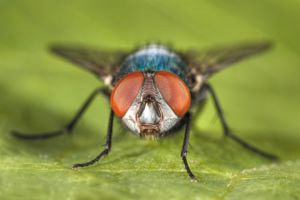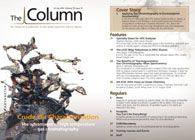GC–MS Analysis of Blowflies to Detect Methamphetamine
Researchers from the University of Western Australia's Centre for Forensic Science have collaborated with the University of Turin's Department of Chemistry in Italy to develop a gas chromatography–mass spectrometry (GC–MS) method to analyze levels of methamphetamine (MA) in blowflies (Calliphora vomitoria L.).

Photo Credit: Getty Images/Rob Ault
Researchers from the University of Western Australia’s Centre for Forensic Science have collaborated with the University of Turin’s Department of Chemistry in Italy to develop a gas chromatography–mass spectrometry (GC–MS) method to analyze levels of methamphetamine (MA) in blowflies (Calliphora vomitoria L.). The method published in the journal Forensic Science International could be performed by forensic scientists collecting evidence related to cause of death in cases of suspected methamphetamine use or overdose.
Blowflies are one of the first insects to colonize decomposing tissue hours after death. Their life-stages are characterized by different body structure and composition, and so can be used as a stopwatch of how long decomposition has been occurring. In cases of suspected toxin exposure where decomposition has progressed, blowflies that have fed on the corpse can be analyzed to detect suspected toxins. Paola Magni, corresponding author of the paper, told The Column: “Several studies have demonstrated that the toxicological analyses of insect material are able to provide a more reliable and sensitive result than from highly decomposed remains (both corpse and carcasses). Many substances (drugs, pesticides, and toxic metals) have been detected in insect tissues, and a relationship between the drug found in the substrate and insects reared on that substrate have been determined.”
Blowfly colonies were reared on beef liver samples spiked with either 5 ng/mg or 10 ng/mg of methamphetamine; concentrations associated with human deaths and sometime with fatal overdose. Larvae and adults were sampled at regular intervals and prepared for analysis by GC–MS. Magni said: “The present research shows the development of a suitable analytical method using GC–MS to detect this drug in larvae, pupae, spent pupae, and adults of C. vomitoria.”
The researchers were able to successfully detect methamphetamine in the blowflies sampled. Furthermore, they observed that methamphetamine ingestion increased the time for development from egg to adult, 60% of larvae died during pupation, and surviving larvae and pupae were larger than controls. Magni told The Column: “The sampling of the flies should be done following the best practices in forensic entomology. For chemical analyses the samples are stored at -20 °C until MA is extracted; for morphological analyses using hot water and ethanol to maintain their structural features. The chemical process of extraction of MA has to be performed carefully because the insect samples are not ‘clean’ and can leave residues that cause problems in the GC–MS instrument.” - B.D
Reference
1. P.A. Magni, T. Pacini, M. Pazzi, M. Vincenti, and I.R. Dadour, Forensic Science International 241, 96–101 (2014).
This story originally appeared in The Column. Click here to view that issue.

Analyzing Vitamin K1 Levels in Vegetables Eaten by Warfarin Patients Using HPLC UV–vis
April 9th 2025Research conducted by the Universitas Padjadjaran (Sumedang, Indonesia) focused on the measurement of vitamin K1 in various vegetables (specifically lettuce, cabbage, napa cabbage, and spinach) that were ingested by patients using warfarin. High performance liquid chromatography (HPLC) equipped with an ultraviolet detector set at 245 nm was used as the analytical technique.
Removing Double-Stranded RNA Impurities Using Chromatography
April 8th 2025Researchers from Agency for Science, Technology and Research in Singapore recently published a review article exploring how chromatography can be used to remove double-stranded RNA impurities during mRNA therapeutics production.
The Effect of Time and Tide On PFAS Concentrations in Estuaries
April 8th 2025Oliver Jones and Navneet Singh from RMIT University, Melbourne, Australia discuss a recent study they conducted to investigate the relationship between tidal cycles and PFAS concentrations in estuarine systems, and offer practical advice on the sample preparation and LC–MS/MS techniques they used to achieve the best results.
Assessing Safety of Medications During Pregnancy and Breastfeeding with LC–MS/MS
Published: April 8th 2025 | Updated: April 8th 2025Researchers conducted a study on medications used in psychiatry and neurology during the perinatal period, assessing how antiepileptic drugs (AEDs) affect placental functions, including transport mechanisms, nutrient transport, and trophoblast differentiation. Several quantitative methods, such as those for antianxiety and hypnotic drugs, were established to evaluate the safety of pharmacotherapy during breastfeeding using liquid chromatography-tandem mass spectrometry (LC–MS/MS).













